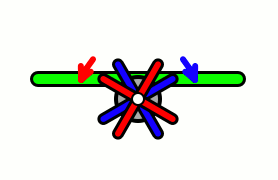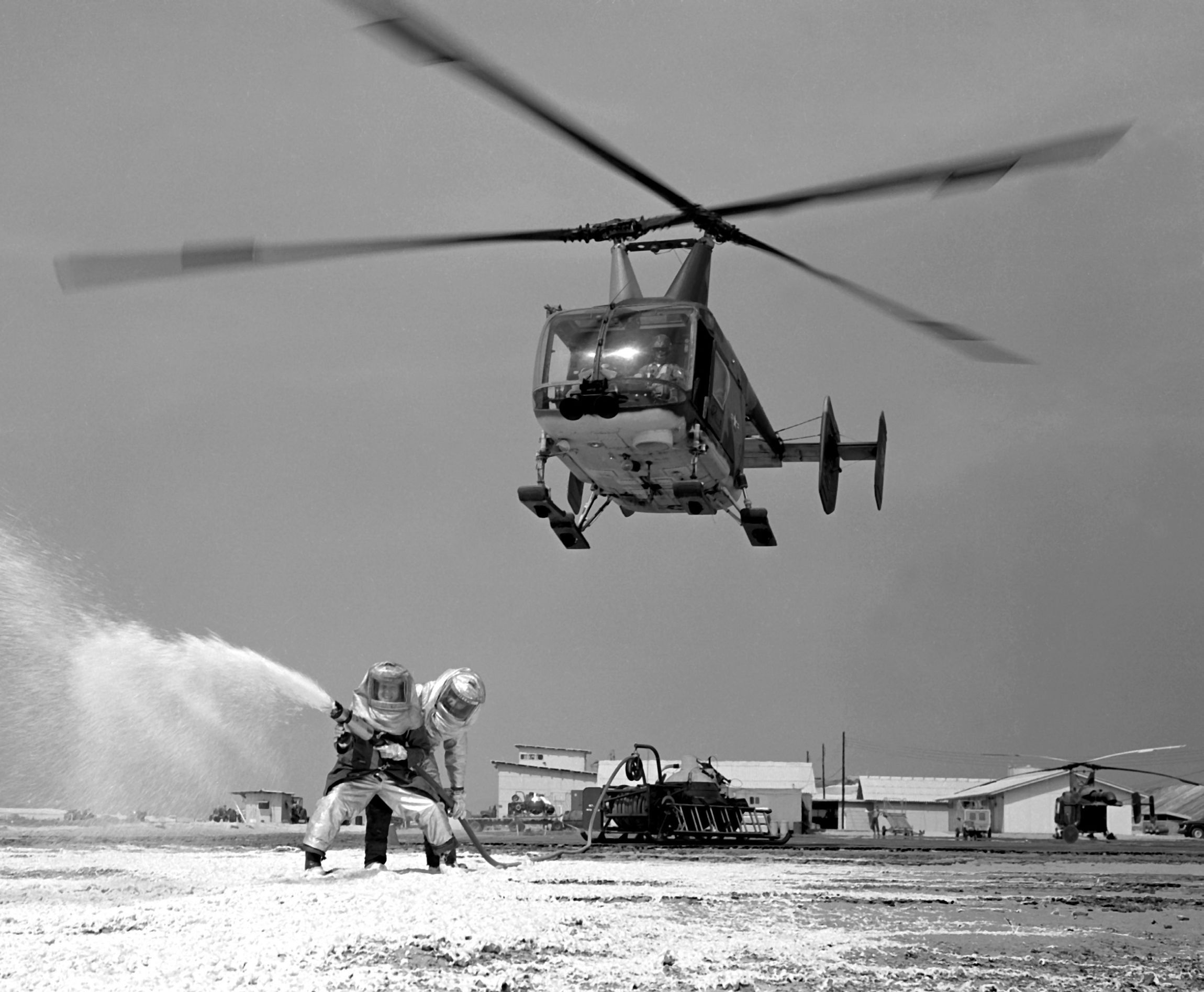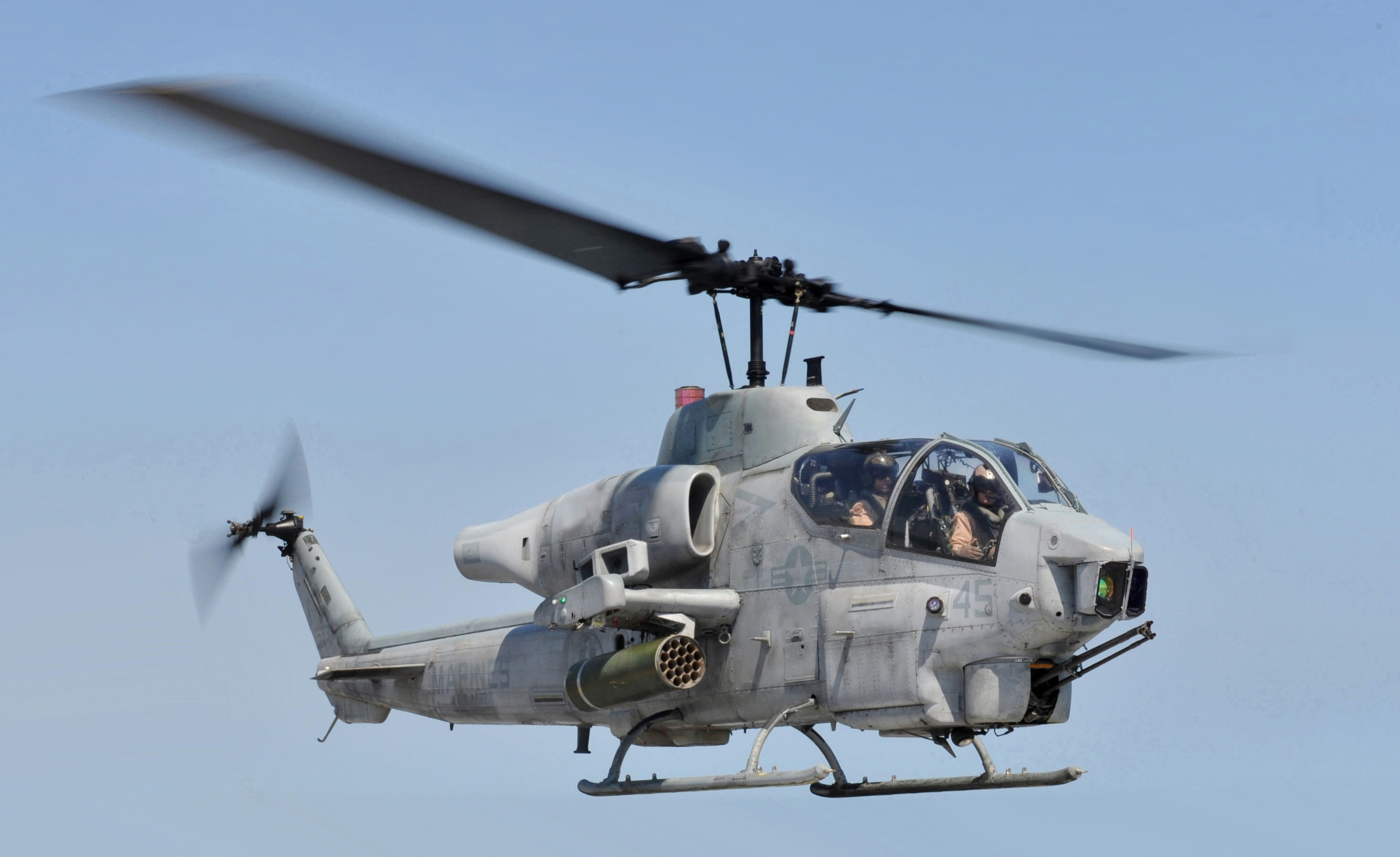|
Contra-rotating
Contra-rotating, also referred to as coaxial contra-rotating, is a technique whereby parts of a mechanism rotate in opposite directions about a common axis, usually to minimise the effect of torque. Examples include some aircraft propellers, resulting in the maximum power of a single piston or turboprop engine to drive two propellers in opposite rotation. Contra-rotating propellers are also common in some marine transmission systems, in particular for large speed boats with planing hulls. Two propellers are arranged one behind the other, and power is transferred from the engine via planetary gear transmission. The configuration can also be used in helicopter designs termed coaxial rotors, where similar issues and principles of torque apply. Contra-rotating propellers should not be confused with counter-rotating propellers, a term which describes non-coaxial propellers on separate shafts; one turning clockwise and the other counter-clockwise. Tandem-rotor helicopters such ... [...More Info...] [...Related Items...] OR: [Wikipedia] [Google] [Baidu] |
Contra-rotating Propellers
Aircraft equipped with contra-rotating propellers, also referred to as CRP, coaxial contra-rotating propellers, or high-speed propellers, apply the maximum power of usually a single piston engine, piston or turboprop engine to drive a pair of coaxial Propeller (aircraft), propellers in contra-rotation. Two propellers are arranged one behind the other, and power is transferred from the engine via a Epicyclic gearing, planetary gear or Gear#Spur, spur gear Transmission (mechanics), transmission. Contra-rotating propellers are also known as counter-rotating propellers, although counter-rotating propellers is much more widely used when referring to airscrews on separate non-coaxial shafts turning in opposite directions. Operation When airspeed is low, the mass of the air flowing through the propeller disk (thrust) causes a significant amount of tangential or rotational air flow to be created by the spinning blades. The energy of this tangential air flow is wasted in a single-prope ... [...More Info...] [...Related Items...] OR: [Wikipedia] [Google] [Baidu] |
Tailsitter
A tail-sitter, or tailsitter, is a type of VTOL aircraft that takes off and lands on its tail, then tilts horizontally for forward flight. Originating in the 1920s with the inventor Nikola Tesla, the first aircraft to adopt a tail-sitter configuration were developed by Nazi Germany during the Second World War. Development of such aircraft spiked during the late 1940s and 1950s, as aircraft designers and defence planners alike recognised the potential value of fixed-wing aircraft that could perform both a vertical take-off and vertical landing while also transitioning into and out of conventional flight. Inherent problems with tail-sitter aircraft were poor pilot visibility and control difficulties, especially during vertical descent and landing. Programmes to develop manned tail-sitters were typically terminated in the form of the more practical thrust vectoring approach, as used by aircraft such as the Hawker Siddeley Harrier and Yakovlev Yak-38. Description A tail-sitter sits ... [...More Info...] [...Related Items...] OR: [Wikipedia] [Google] [Baidu] |
Counter-rotating Propellers
Counter-rotating propellers, also referred to as CRP, are propellers which spin in opposite directions to each other. They are used on some twin- and multi-engine propeller-driven aircraft. The propellers on most conventional twin-engined aircraft spin clockwise (as viewed from behind the engine). Counter-rotating propellers generally spin clockwise on the left engine and counter-clockwise on the right. The advantage of such designs is that counter-rotating propellers balance the effects of torque and P-factor, meaning that such aircraft do not have a critical engine in the case of engine failure. Drawbacks of counter-rotating propellers come from the fact that, in order to reverse the rotation of one propeller, either one propeller must have an additional reversing gearbox, or the engines themselves must be adapted to turn in opposite directions. (Meaning that there are essentially two engine designs, one with left-turning and the other with right-turning parts, which compl ... [...More Info...] [...Related Items...] OR: [Wikipedia] [Google] [Baidu] |
H-43 Huskie
The Kaman HH-43 Huskie is a helicopter with intermeshing rotors used by the United States Air Force, the United States Navy and the United States Marine Corps from the 1950s until the 1970s. It was primarily used for aircraft firefighting and rescue in the close vicinity of air bases, but was later used as a short-range overland search and rescue aircraft during the Vietnam War. Under the aircraft designation system used by the U.S. Navy pre-1962, Navy and U.S. Marine Corps versions were originally designated as the HTK, HOK or HUK, for their use as training, observation or utility aircraft, respectively. Design and development In 1947 Anton Flettner, a German aviation engineer, was brought to New York in the United States as part of Operation Paperclip. He was the developer of Germany's Flettner Fl 282 "Kolibri" (Hummingbird), a helicopter employing the "synchropter" principle of intermeshing rotors, a unique design principle that dispenses with the need for a tail rotor. Fl ... [...More Info...] [...Related Items...] OR: [Wikipedia] [Google] [Baidu] |
Helicopter Rotor
A helicopter main rotor or rotor system is the combination of several rotary wings (rotor blades) with a control system, that generates the aerodynamic lift force that supports the weight of the helicopter, and the thrust that counteracts aerodynamic drag in forward flight. Each main rotor is mounted on a vertical mast over the top of the helicopter, as opposed to a helicopter tail rotor, which connects through a combination of drive shaft(s) and gearboxes along the tail boom. The blade pitch is typically controlled by the pilot using the helicopter flight controls. Helicopters are one example of rotary-wing aircraft (rotorcraft). The name is derived from the Greek words ''helix'', helik-, meaning spiral; and ''pteron'' meaning wing. Design principles Overview The helicopter rotor is powered by the engine, through the transmission, to the rotating mast. The mast is a cylindrical metal shaft that extends upward from—and is driven by—the transmission. At the top of the m ... [...More Info...] [...Related Items...] OR: [Wikipedia] [Google] [Baidu] |
Coaxial Rotors
Coaxial rotors or coax rotors are a pair of helicopter rotors mounted one above the other on concentric shafts, with the same axis of rotation, but turning in opposite directions (contra-rotating). This rotor configuration is a feature of helicopters produced by the Russian Kamov helicopter design bureau. History The idea of coaxial rotors originates with Mikhail Lomonosov. He had developed a small helicopter model with coaxial rotors in July 1754 and demonstrated it to the Russian Academy of Sciences. In 1859, the British Patent Office awarded the first helicopter patent to Henry Bright for his coaxial design. From this point, coaxial helicopters developed into fully operational machines as we know them today. Two pioneering helicopters, the Corradino D'Ascanio#Between the wars, Corradino D'Ascanio-built "D'AT3" of 1930, and the generally more successful French mid-1930s ''Gyroplane Laboratoire'', both used coaxial rotor systems for flight. Design considerations Having t ... [...More Info...] [...Related Items...] OR: [Wikipedia] [Google] [Baidu] |
Azipod
Azipod is a trademark azimuth thruster pod design, a marine propulsion unit consisting of a fixed pitch propeller mounted on a steerable gondola ("pod") containing the electric motor driving the propeller, allowing ships to be more maneuverable. They were developed in Finland jointly by the shipbuilding company Masa-Yards and the ABB Group, which produces them. Although "Azipod" is a registered brand name, it is sometimes used incorrectly as a generic trademark for podded propulsion units manufactured by other companies. Concept In the conventional azimuth thrusters such as Z-drive and L-drive thrusters, the propeller is driven by an electric motor or a diesel engine inside the ship's hull. The propeller is coupled to the prime mover with shafts and bevel gears that allow rotating the propeller about a vertical axis. This type of propulsion system has a long tradition throughout the 1990s and today such propulsion units are produced by a number of companies arou ... [...More Info...] [...Related Items...] OR: [Wikipedia] [Google] [Baidu] |
Azimuth Thruster
An azimuth thruster is a configuration of marine propellers placed in pods that can be rotated to any horizontal angle (azimuth), making a rudder unnecessary. These give ships better maneuverability than a fixed propeller and rudder system. Types of azimuth thrusters There are two major variants, based on the location of the motor: # Mechanical transmission, which connects a motor inside the ship to the outboard unit by gearing. The motor may be diesel or diesel-electric. Depending on the shaft arrangement, mechanical azimuth thrusters are divided into L-drive and Z-drive. An L-drive thruster has a vertical input shaft and a horizontal output shaft with one right-angle gear. A Z-drive thruster has a horizontal input shaft, a vertical shaft in the rotating column and a horizontal output shaft, with two right-angle gears. # Electrical transmission, more commonly called pods, where an electric motor is fitted in the pod itself, connected directly to the propeller witho ... [...More Info...] [...Related Items...] OR: [Wikipedia] [Google] [Baidu] |
Vertical Takeoff And Landing
A vertical take-off and landing (VTOL) aircraft is one that can take off and land vertically without relying on a runway. This classification can include a variety of types of aircraft including helicopters as well as thrust-vectoring fixed-wing aircraft and other hybrid aircraft with powered rotors such as cyclogyros/cyclocopters and gyrodynes. Some VTOL aircraft can operate in other modes as well, such as CTOL (conventional take-off & landing), STOL (short take-off & landing), or STOVL (short take-off & vertical landing). Others, such as some helicopters, can only operate as VTOL, due to the aircraft lacking landing gear that can handle taxiing. VTOL is a subset of V/STOL (vertical or short take-off & landing). Some lighter-than-air aircraft also qualify as VTOL aircraft, as they can hover, takeoff and land with vertical approach/departure profiles. Electric vertical takeoff and landing aircraft, or eVTOLs, are being developed along with more autonomous flight control t ... [...More Info...] [...Related Items...] OR: [Wikipedia] [Google] [Baidu] |
Volvo Penta
Volvo Penta was founded as Penta in 1907 with the production of its first marine engine, the B1. The Penta company soon became an established internal combustion engine manufacturer, which in 1927 delivered the engine for Volvo's first passenger car. Volvo acquired Penta in 1935 and Volvo Penta has been part of the Volvo Group since then. It now provides internal combustion engines (ICEs) and complete power systems to the marine industry, power-generating equipment, and similar industrial applications. The business also manufacturers sterndrive and inboard drive systems such as the Volvo Penta IPS. The engine program comprises petroleum fuel ( diesel and gasoline) engines with power outputs of between . History In 1868, engineer Johan George Grönvall, also known as John G. Grönvall, founded a mechanical workshop and foundry in Skövde, Sweden. The company became limited in 1875, known as ''Sköfde Gjuteri och Mekaniska Verkstad'' or simply ''Gjuteriet''. Products ranged f ... [...More Info...] [...Related Items...] OR: [Wikipedia] [Google] [Baidu] |
Asea Brown Boveri
ABB Ltd. is a Swedish-Swiss multinational corporation headquartered in Zürich, Switzerland. The company was formed in 1988 when Sweden's Allmänna Svenska Elektriska Aktiebolaget (ASEA) and Switzerland's Brown, Boveri & Cie merged to create ASEA Brown Boveri, later simplified to the initials ABB. Both companies were established in the late 1800s and were major electrical equipment manufacturers, a business that ABB remains active in today. The company has also since expanded to robotics and automation technology. It is ranked 341st in the Fortune Global 500 list of 2018 and has been a global Fortune 500 company for 24 years. Until the sale of its Power Grids division in 2020, ABB was Switzerland's largest industrial employer. ABB is traded on the SIX Swiss Exchange in Zürich, Nasdaq Stockholm in Sweden, and the New York Stock Exchange in the United States. An ABB entity plead guilty for bid rigging in 2001, and the company has had 3 US Foreign Corrupt Practices Act bribin ... [...More Info...] [...Related Items...] OR: [Wikipedia] [Google] [Baidu] |








